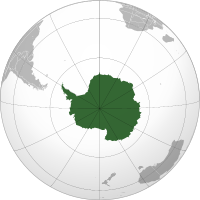
Photo from wikipedia
Citizen science projects have a long history in ecological studies. The research usefulness of such projects is dependent on applying simple and standardized methods. Here, we conducted a citizen science… Click to show full abstract
Citizen science projects have a long history in ecological studies. The research usefulness of such projects is dependent on applying simple and standardized methods. Here, we conducted a citizen science project that involved more than 3500 Swedish high school students to examine the temperature difference between surface water and the overlying air (Tw-Ta) as a proxy for sensible heat flux (QH). If QH is directed upward, corresponding to positive Tw-Ta, it can enhance CO2 and CH4 emissions from inland waters, thereby contributing to increased greenhouse gas concentrations in the atmosphere. The students found mostly negative Tw-Ta across small ponds, lakes, streams/rivers and the sea shore (i.e. downward QH), with Tw-Ta becoming increasingly negative with increasing Ta. Further examination of Tw-Ta using high-frequency temperature data from inland waters across the globe confirmed that Tw-Ta is linearly related to Ta. Using the longest available high-frequency temperature time series from Lake Erken, Sweden, we found a rapid increase in the occasions of negative Tw-Ta with increasing annual mean Ta since 1989. From these results, we can expect that ongoing and projected global warming will result in increasingly negative Tw-Ta, thereby reducing CO2 and CH4 transfer velocities from inland waters into the atmosphere.
Journal Title: Scientific Reports
Year Published: 2017
Link to full text (if available)
Share on Social Media: Sign Up to like & get
recommendations!